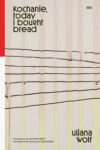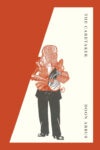 [New Directions; 2014]
[New Directions; 2014]
Tr. by Jean Harris
In his introduction to Captives, newly translated by Jean Harris, Norman Manea describes the challenges of writing a “document of the epoch.” The time in question is Romania’s “liberalization period” of the late 1960s, which retrospectively we can identify with the first stages of dictator Nicolae Ceausescu’s hardening of political control. Soon thereafter came the rigid policing of Party ideology through mass surveillance — “the wooden discourse of an ideological system” in Manea’s words — the pervasive feature of everyday life for decades to come. But matters are more complicated than this, as Romanians were not far removed from the traumas of WWII and their complicated participation in that conflict — where fascist alliances with Axis powers set the military engagement until a 1944 coup swung political allegiances in the opposite direction and hastened the advance of the Red Army. Manea himself was sent to a concentration camp in Transinestra, only to return to Romania at age 9 in 1945. Given the pathologies that plagued many European societies after the war, and the attendant difficulties in representing them, many writers in the liberalization period were tempted to indulge in socialist conventions such as the heroic protagonist or the future-oriented plot involving the overcoming of present conditions (e.g. the traumas of the immediate past). One will find neither of these in Captives.
So how does Manea’s prose meet this challenge — to write with the threat of censorship, against the grain of socialist conventions, and in such a manner as to accurately represent the broader sweep of post-war Romanian society? One of his models is what he identifies as the “heavily descriptive methods of the so-called nouveau roman.” Consider the following quotation, from early in the novel:
The high iron gate strikes its latch; the narrow, serpentine, spiral staircase devours itself. Hand on the cold metal balustrade, the climber coils within himself. One flight up. Again, the steps rotate uniformly again in the shape of a fan: a point flowing at an even rate along the radius of a circle. Rotating evenly, slowly around the circumference, dizzied by the curved trajectories, the climber’s body turns in on itself toward the painfully closed center.
Captives, especially in the first two sections entitled “She” and “You,” hews so close to stairways, walls, doorknobs, dirty spoons in jars of compote, and clutched letters that it takes some time for the reader to get a sense of who the main characters are and where they stand, in relation to one another and in relation to their projects. This general atmosphere of confusion, similar to nouveau roman classics like The Erasers, is however augmented by the slippage in voice between the first-, second-, and third-person and overlaid with the discomfort that is so central to the eventual unfolding of Captives’ interlocking stories. Continuing on shortly after the quotation above, as the climber, identified provisionally as “the fugitive,” slips into the apartment of Prof. M. Smantanescu: French and Piano:
The door opens toward books heaped on the heavy iron shelves, vases with slender flowers, a narrow table, a tall chair, a piano raising its oblique tail, the ceiling painted with pastel chairs, the slippery parquet: everything accumulated with the serenity of a fairytale, until chaos imposes itself, until the path from the street corner must be taken again, killing reveries, reestablishing the brutality of things, dispelling mystifications, until the street reasserts its filth, with small, uneven houses doused in fine rain, crooked windows; the grillwork of the gates will be damp and cold, and the length of the iron balustrade will cool the hands; the spiral of the narrow steps soiled in mud . . .
Discomfort, dampness, the subversion of order: hallmarks of a certain Central European aesthetic — seen for example in those scenes Bela Tarr’s Satantango where rain relentlessly lashes the farmhouse — these are certainly important components of Manea’s stylistic choices. Through the gradual unfolding of three stories — an engineer recounting his youth full of political activity and family conflict, the aforementioned piano teacher trying to establish or recounting a love affair (it is unclear), and a veteran trying to restore a semblance of normalcy after experiencing the horrors of war — Manea leads the reader through the unaccommodating spaces of both the city and country, as well as the unstable terrain of memory. The effect is felt acutely in the third section, “I,” in which a brief passage of lucidity, precarious as any other mental state in the novel, throws the atmosphere of this so called “liberalization period” into sharp relief.
However, the challenge still remains of capturing a reality, or a mentality, that is fraught with instability. It is similar in nature to W.G. Sebald’s questions concerning the British bombing of German cities towards the end of WWII, and the inability of the German literary establishment to write squarely about that. The issue essentially turns on the environing conditions of memory and identity. In A Natural History of Destruction Sebald discusses Alexander Kluge’s “The Air Raid on Halberstadt on 8 April 1945” (written by Kluge in 1970). At one point Kluge references an unnamed US army psychologist who observes that “the population, although obviously showing an innate wish to tell its own story, [had] lost the psychic power of accurate memory, particularly within the confines of the ruined city.” He then shifts towards the language of the eyewitnesses, with their characteristic lapse into cliché — “all hell was let loose,” “we were staring into the inferno.” One can certainly sympathize with Sebald, not satisfied with the clinical approach that equates the ruins of cities with the rubble of memory, nor with the hollow language that is the narrative equivalent of rebuilding cathedrals with stucco. The major virtue of Captives is that it is a consistently difficult work, one that in my opinion speaks to Sebald’s call to stick within the register of memory, even if memory has been stripped of its supporting features. Manea’s characters are conscious of this impossible condition, able to retell fragments of their school years because, as the engineer remarks, “I had memory back then,” but unable to arrange these into the linear arc that identity requires to bear on current decisions. What remains to the characters is either the claustrophobia of their movement throughout daily routines (it’s astonishing how many instances occur of people clinging to walls), or a measured accounting of their own failings. It is an uncomfortable place for a writer trying to avoid the censors or a reader trying to find a foothold within the narrative, but Captives should be welcomed as an important and rewarding document of post-war Romanian literature nevertheless.
Michael Schapira is the Interview Editor for Full Stop.
This post may contain affiliate links.







